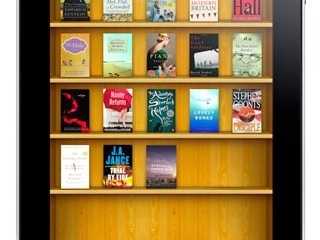
Amazon’s war with publishers heated up last week with a passive-aggressive letter to customers posted on Amazon.co.uk informing them that the high prices of e-books have been set by publishers and Amazon will continue to fight them. Personally, I go back and forth on this issue. On the one hand, charging the same price (or more) for an e-book as a hardcover seems ludicrous, but at the same time, the publishing industry has long struggled to survive, as there is little if any money in books these days. So what is the real story?
Amazon’s letter to customers reads:
“Dear Customers, recently, you may have heard that a small group of UK publishers will require booksellers to adopt an ‘agency model’ for selling e-books. Under this model, publishers set the consumer price for each e-book and require any bookseller to sell at that price… We believe they will raise prices on e-books for consumers almost across the board. For a number of reasons, we think this is a damaging approach for readers, authors, booksellers and publishers alike.”
The letter ends with a simple statement about Amazon’s confidence in its customers’ buying power:
“In any case, we expect UK customers to enjoy low prices on the vast majority of titles we sell, and if faced with a small group of higher-priced agency titles, they will then decide for themselves how much they are willing to pay for e-books, and vote with their purchases.”
The agency model that Amazon refers to was first proposed by Macmillan, which threatened to pull its books from Amazon if the online bookseller didn’t raise the prices of its $9.99 e-books. Amazon responded by pulling Macmillan’s books itself, but as other publishers rallied behind Macmillan (Hachette, HarperCollins, Simon & Schuster, and Penguin), Amazon has been left no other choice but to capitulate and let publishers set their own prices.
How it all started
The drama goes back to the debut of the Kindle, which Amazon sought to promote by buying e-books at their wholesale hardcover price (some $13 per book) and then selling them for $9.99, intentionally taking a loss in order to gain a stronger market share and promote the sale of the Kindle. David Young, chairman and CEO of Hachette Book Group, told The New Yorker: “The big concern—and it’s a massive concern—is the $9.99 pricing point. If it’s allowed to take hold in the consumer’s mind that a book is worth ten bucks, to my mind it’s game over for this business.”
Here is where I feel for the big book publishers: there is no money in books. Even Steve Jobs knows this, telling his audience at the iPad unveiling earlier this year: “It doesn’t matter how good or bad the product is, the fact is that people don’t read anymore… Forty per cent of the people in the U.S. read one book or less last year.”
Anyone who has ever written a book or worked in publishing knows how unlikely it is that you will actually be able to pay off your student debt on a publishing income. (Interesting side-note: when I got my first internship with a publishing house several years ago, the first thing the editor said to me—literally, the first thing—was, “there is no money in publishing.”)
So where does the money go? If a hardcover book costs $26, including paper and ink and all the physical processes of publishing, why on earth would an e-book cost the same—or more, in the case of Ken Follett’s “Fall of Giants” or James Patterson’s “Don’t Blink”? Because most of that money goes to the people who actually crafted the story—not the physical book-making process. For that $26 hardcover, the publisher will receive about $13. Authors receive about 15% of the cover price, so that’s almost $4. Some $1.80 goes towards the cost of paper and binding, and another $1 to marketing and $1.70 for distribution leaves about $4.50, which goes towards editors, sales, and all the other little expenses, like author advances. And then booksellers typically return some 35% of all of the hardcovers they buy. Like I said, there’s no money in publishing.
So?
So what was so wrong with Amazon paying full price for books and then reselling them for less if they were the ones taking the hit? They were taking over the scene. More customers began adopting the e-book platform and were moving away from hardcover books, which threatened to cut into publishers’ profits. Big deal, you say. Well, Amazon was also gaining a monopoly on e-book sales. By the end of 2009, Amazon accounted for some 80% of all e-book sales.
But Amazon hasn’t been the only one to face down angry book publishers. Google also threatened publishers’ bottom line when they announced in 2004 that the overarching goal of Google books was to scan and digitize every book in the world for the free, online perusal of Internet users. Google got a reality check in the form of a lawsuit that ended with Google agreeing to pay $125 million to authors and publishers for the use of their copyrighted content.
And now Apple has broken onto the scene with the iPad, but Steve Jobs worked with publishers from the beginning, allowing them to set their own prices and knowing that Amazon would not maintain its monopoly for long. “Ultimately, Apple is in the device—not the content—business,” an unnamed Apple insider told The New Yorker. “Steve Jobs wants to make sure content people are his partner. Steve is in the I win/you win school.”
While I am firmly on the side of affordable, accessible content for all, I also have to admit that content doesn’t create itself.
Image source: flickr.com



















